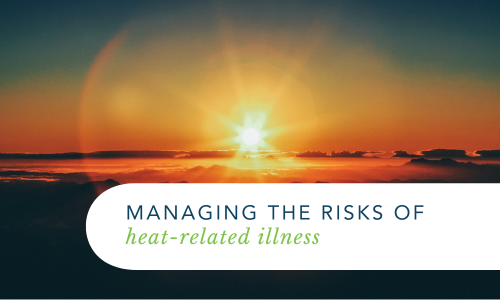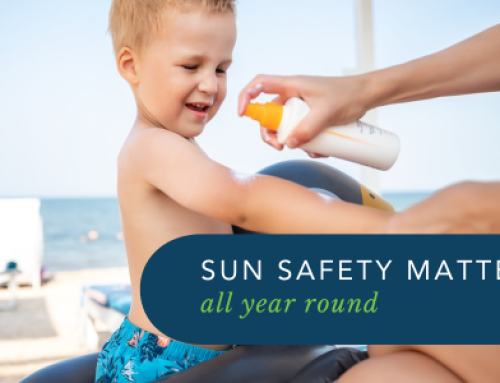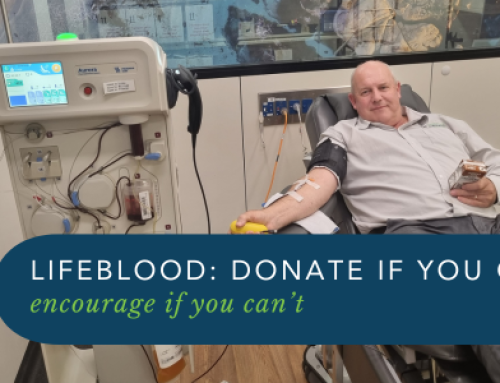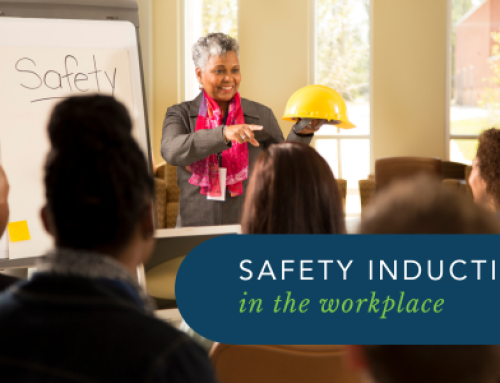Australian workplaces, whether indoors or outdoors, face the risk of heat-related illnesses affecting staff.
Some of these illnesses can even be fatal, but it’s important to remember that there are things that can be done to prevent them; they’re not just part of working in our climate.
These illnesses are caused by absorbing more heat in your body than it can get rid of through sweat and other mechanisms your body uses for cooling.
What causes heat-related illnesses to occur?
These factors can cause staff to experience heat-related issues:
- working in hot conditions for large periods of time while doing strenuous work
- working in direct sunlight without any shade
- heat coming from machinery or equipment
- heat reflecting from construction materials, concrete structures roads glass and aluminium
- lack of water consumption rest or cooling-off periods
- clothing unsuitable for heated environments
More personal factors such as medications, medical conditions, diet (including caffeine and alcohol consumption) age and fitness can also contribute to a person’s susceptibility to heat stress or stroke.
Warning signs of heat illness
It’s important to recognise the warning signs of heat-related illness before it becomes serious and life-threatening.
If anyone in your workplace starts feeling weak, dizzy, light-headed, clumsy or nauseous, or they start vomiting or fainting, seek medical attention quickly.
Types of heat-related illness
These illnesses range from unpleasant to life-threatening.
Heat discomfort
Heat discomfort is the most common ‘ illness’ and may make you feel uncomfortable, but it is not life-threatening.
Heat stress
The next step up from heat discomfort, heat stress occurs when working in stuffy, cramped and hot areas, or from physically exerting yourself in hot weather.
Watch for these symptoms:
- shortness of breath
- quick breathing
- clammy cool pale skin
- a weak or racing pulse
Heatstroke
Heatstroke is incredibly serious.
It can be fatal without immediately practicing first aid and providing medical attention quickly.
These are the symptoms and signs to watch out for:
- a rapid and pounding pulse
- dry and flushed skin
- a temperature of 40 degrees Celsius or higher
What employers and staff can do to minimise the risk of heat-related illness
There is no set temperature in WHS legislation that determines when workers can stop work and go home, as each workplace environment varies.
It is the employer’s responsibility to manage and minimise heat-related risks if they cannot be eliminated altogether.
Here are some practical things that can be done by both employees and employers:
- change work schedules to avoid working during the hottest parts of the day
- have drinking water available at all times
- provide staff with extra rest breaks and a shelter from the heat
- train staff in recognising heat-related illness symptoms and warning signs in themselves and coworkers, and what to do
- provide air conditioners, misters or fans to keep workers cool
- move heat sources as far as possible from workers
- monitor urine output and colour for signs of dehydration
- encourage water consumption and rest breaks
- wear sun-smart clothing, including sunglasses and sunscreen
Providing adequate resources to keep workers cool is an important part of reducing the risk of heat-related illness.
However, creating a workplace culture that encourages staff to look out for each other, drink more water and take breaks when necessary is what can also make a huge difference.
Talk to the Workplace Emergency Management team today to find out about organising first aid training for your workplace.
We’ll teach your staff how to provide first aid and medical attention, including when they have noticed the symptoms and signs of heat-related illness in each other.
GET IN TOUCH
Are you ready for peace of mind that your workforce is as safe and prepared as possible?
With a dedicated team of staff ready to help you meet compliance requirements and improve the overall safety of your workplace, all you need to do is get in touch.
Request your free audit today!



